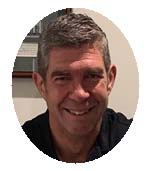 The Shoulder: Theory and Practice
The Shoulder: Theory and Practice
PLEASE NOTE THAT JEREMY IS NO LONGER TRAVELLING TO AUSTRALIA, RATHER HE IS PRESENTING HIS COURSE ONLINE AND LIVE WITH AAP EDUCATION. YOU CAN FIND OUT MORE DETAILS HERE.
Presented by Dr Jeremy Lewis, The Shoulder: Theory & Practice follows a biopsychosocial approach to assessing and managing musculoskeletal conditions involving the shoulder region. Taught worldwide in over 35 countries, this course is continually updated, integrating the latest research evidence.
In addition to assessing and managing the shoulder region, this course synthesises the complex relationships between shoulder and body biomechanics, pain science, lifestyle, patient psychosocial factors, beliefs and expectations, best practices, and more… It is also guaranteed to be fun.
This course remains a ‘work in progress’ and is continually updated as new research and clinical understanding emerge. As a result, many people have participated on two and some on three occasions. It will be thought-provoking and provide an opportunity to discuss ideas and share experiences.
The Shoulder: Theory & Practice Taster Video
Learning Outcomes
- To develop a better understanding and knowledge of the clinical anatomy and biomechanics of the shoulder region.
- To appreciate the importance of taking a biopsychosocial approach to patient management.
- To develop a comprehensive subjective and physical evaluation strategy for the shoulder that considers local and referred sources of pain and directs the clinician to develop an appropriate management plan.
- To develop greater confidence with the physical assessment of the shoulder region and a better understanding of the evidence for the use of the selected assessment techniques.
- To develop a greater understanding and knowledge of various pathologies of the shoulder region.
- To develop greater competency in the management of patients with a variety of shoulder pathologies.
- To review the research evidence relating to the influence of posture and muscle imbalance and its relationship with shoulder pathology.
- To review the evidence underpinning the pathology, and the assessment and management of various shoulder conditions, including rotator cuff related shoulder pain and frozen shoulder
- To review the research evidence evaluating the use of diagnostic imaging as part of the management for musculoskeletal disorders of the shoulder.
- To review the research evidence evaluating the use of injections as part of the management for musculoskeletal disorders of the shoulder.
- To develop greater confidence in the use of exercise therapy and other techniques for managing shoulder conditions and evaluation of the efficacy of the techniques, balanced against the evidence base for using these techniques.
"Jeremy was enormous and made it one of the best education experiences I have participated in for a very long time. Please tell him my dodgy shoulder has been feeling fantastic after being the symptomatic guinea pig and the Red was worth every cent for that. I hope he had an easy trip back to the UK
Thanks for organising the course. Very impressed"
Geoff Clark - Physiotherapist
Jeremy in 'Active Action'
![]()
Key References
- Lewis, J., McCreesh, K., Roy, J. S., & Ginn, K. (2015). Rotator Cuff Tendinopathy: Navigating the Diagnosis-Management Conundrum. J Orthop Sports Phys Ther, 1-43. doi:10.2519/jospt.2015.5941
- Lewis, J. (2016). Rotator cuff related shoulder pain: Assessment, management and uncertainties. Manual Therapy, 23, 57-68.
IFOMPT 2016 Keynote Address
You can view Jeremy's keynote address at IFOMT 2016 where he updates all things Shoulder.
PLEASE NOTE THAT JEREMY IS NO LONGER TRAVELLING TO AUSTRALIA, RATHER HE IS PRESENTING HIS COURSE ONLINE AND LIVE WITH AAP EDUCATION. YOU CAN FIND OUT MORE DETAILS HERE.
There are no events in the selected category


